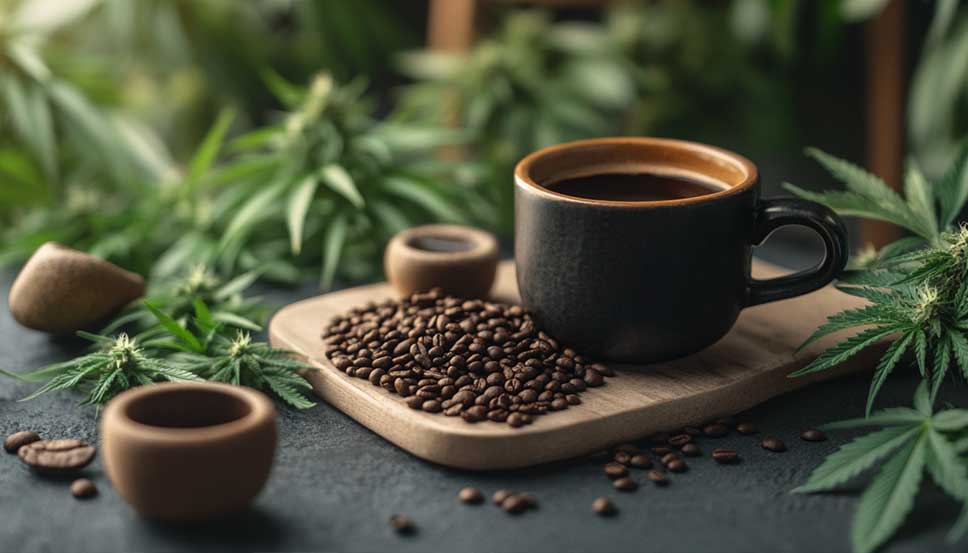Feeding and fertilizing your autoflower cannabis plant with the right nutrients is a requirement that cannot be overlooked. To a large extent, the harvest yield, and subsequently, your investment output depends on this requirement. One of the best ways to improve this yield is by fertilizing your cannabis plant. However, in marijuana cultivation, fertilizer application only has one primary purpose – supplying the needed nutrients for the weed plant. The nutrients needed by the plant are many and must be supplied when needed. If the soil lacks these nutrients, your cannabis growth becomes stunted. In severe cases, the leaves fall off; the stems weaken, the buds become smaller, and the root system dies out.
If you are considering increasing your yield with fertilizers, you have many decisions to make. It starts with selecting one of the two principal types of marijuana fertilizers – synthetic or organic. You also need to understand the nutrients needed at different stages of cannabis growth. With this information, you can easily select the best autoflower seeds that fit your growing operation.
Auto-flowering strains are developed from the Cannabis ruderalis genetics. Strains with the auto-flowering trait depend on time and age to transition into the flowering stage. This means these plants automatically transition from the germination stage to flowering without the need for light cycle modifications. Since flowering is automatic, you would expect that these plants complete their growth cycle within a short window. However, within this period, they also rapidly absorb nutrients from the soil. These nutrients are needed for rapid cellular rearrangement, root system development, bud formations, and stem growth.
The nutrient absorption rate is high, and the plant can quickly exhaust the soil’s deposit of nutrients. This frequently happens in regions where the soil is practically poor in Nitrogen, potassium, and phosphorus. Best autoflower seeds, in many cases, need fertilizers to complete their growth cycle. Experienced marijuana farmers who choose the best autoflower seeds always have their preferred fertilizers handy as the plants start growing. In this review, we have compiled a list of the best organic fertilizers for the best autoflower seeds you should consider.
Both synthetic (commercially available) and organic (homemade) fertilizers are suitable for autoflowers. However, when growing best autoflower seeds, there are many reasons why you would want to consider using an organic fertilizer. Though not exclusive, here are some of the reasons to consider organic fertilizers when cultivating best autoflower seeds;
If you are just starting planting your best autoflower seeds, you don’t want to overstretch your budget. Using organic fertilizers might help you spend less. Compared to synthetic fertilizers, the production cost for organic fertilizers is lower. The raw materials needed can be easily sourced from the environment. If you have the necessary skills, you can make these fertilizers right at home and apply them at no cost whatsoever. This is a great option for growers focusing on the best autoflower seeds without breaking the bank.
You can easily customize the nutrient content of your organic fertilizer, making it perfect for nurturing your best autoflower seeds. Synthetic fertilizers are sold in a fixed NPK ratio, but when growing best autoflower seeds, flexibility is key. With organic fertilizers, if you know which component supplies which nutrient, you can prepare fertilizers with different nutrient ratios to meet the specific needs of your best autoflower seeds.
Perhaps this is one of the biggest reasons many cannabis farmers prefer organic fertilizers for their best autoflower seeds. The raw materials are biodegradable, posing no significant hazard to the environment. Since organic fertilizers contain no synthetic chemicals, they pose no serious health risks. You can safely apply them to your best autoflower seeds without worries about chemical contamination or health issues.
You can be confident that your harvest from the best autoflower seeds is safe with organic fertilizers. Some synthetic fertilizers can interfere with the taste, flavor, and aroma of cannabis plants because residual chemicals get absorbed into the plant system. Organic fertilizers, being made from natural components, contain no residual chemicals, preserving the desirable features of your best autoflower seeds harvest and ensuring a pure and rich flavor.
Getting it right with organic fertilizers all starts with the soil. The organic soil recipe – commonly described as ‘Super Soil’ – is one of the most widely used organic growth mediums for auto-flowers. The soil is enriched with organic raw materials that gradually decompose over time, releasing nutrients in a form that the plant can easily absorb.
There are various recipes and steps for mixing a Super Soil, but the components are almost always the same. You can modify the quantity of each component depending on the nutrient profile you want for your soil. One popular mix ratio for autoflowers, perfect for best autoflower seeds, is the Ballpark recipe:
The fungi, mycorrhizae, and bacteria are essential in Super Soils. They play two key roles: breaking down organic components into plant-available nutrients and improving nutrient absorption by binding to the roots of your best autoflower seeds.
Bat poo, commonly called ‘Bat Guano,’ is a traditional organic fertilizer widely used in many planting operations. For thousands of years, local farmers without access to synthetic fertilizers have relied on bat guano. Its effectiveness has stood the test of time, making it a trusted choice for growers. Today, many cannabis cultivators use bat guano as an organic source of Nitrogen, Phosphorus, and Potassium—essential nutrients for achieving the best results with your best autoflower seeds.
Bat guano can be prepared in powder form or as a pre-made extract, such as aerated tea. Depending on the diet of the bats and their habitat, bat guano contains a rich supply of macro- and micronutrients vital for autoflowers. When harvested and dried, you can mix bat guano into your compost or apply it directly to the growing medium. Its high phosphorus content makes it particularly valuable as a bloom booster during the flowering phase.
Whether you’re cultivating with the best autoflower seeds or experimenting with different strains, bat guano offers a natural nutrient boost that can enhance your yield and bud quality. Depending on your farm’s layout and weather conditions, you can adapt how you use bat guano to maximize the benefits for your autoflowers.
Manure is another excellent organic fertilizer option for your autoflower plants grown from best autoflower seeds. It consists primarily of decomposed animal waste collected from farms. Cannabis cultivators in regions with livestock farming often prefer manure as an affordable, natural fertilizer. Its availability and low cost make it an attractive choice.
Manure provides a balanced nutrient profile ideal for autoflowers and improves soil conditioning, creating a nutrient-rich environment that supports multiple growing cycles within the same cannabis season. When using locally sourced manure, proper composting is essential to prevent any harm to the plants. Common types of manure used for autoflowers include:
Although not very common, compost tea is an excellent organic fertilizer option for those growing autoflowers from best autoflower seeds. This liquid concentrate contains soluble nutrients and beneficial microorganisms derived from compost materials. Essential ingredients for making compost tea include quality compost, worm castings, fish hydrolysates, kelp, and molasses. The compost should be rich in beneficial microorganisms, while worm castings are nutrient-rich byproducts expelled by worms after digestion. Kelp and molasses serve as nourishment for the fungi and bacteria that develop during the brewing process.
Once prepared, compost tea can be diluted and applied directly to the roots or sprayed onto the leaves of your autoflower plants. Avoid applying compost tea over irrigation lines to prevent clogging. It’s also advisable to test a potent dose on a small number of autoflowers first, monitoring for any adverse reactions on the leaves within a few hours. Using compost tea can enhance the growth and health of autoflowers cultivated from best autoflower seeds.
Growing your autoflowers with organic fertilizers is an effective way to improve plant yield, especially when starting with best autoflower seeds. The raw materials for most organic fertilizers are locally available, helping you save time, energy, and resources. You might also consider consulting a botanist or agrochemical expert for advice on any additional materials you may require. For the best results, buy autoflower weed seeds, high-quality and available straight from Amsterdam.
Choosing the best autoflower seeds and using organic fertilizers can significantly enhance your cannabis cultivation experience. Organic fertilizers not only improve the quality and yield of your autoflowers but also promote sustainable growing practices that benefit the environment. By opting for locally sourced organic materials and understanding your plants’ nutritional needs, you set yourself up for a successful harvest.
If you want to learn more about sustainable fertilizing techniques and the benefits of organic amendments, we recommend checking out this comprehensive guide from the U.S. Environmental Protection Agency (EPA). Incorporating these methods alongside the best autoflower seeds will help you grow healthy, robust plants while minimizing environmental impact.













Related Posts

Growing marijuana requires more than just sticking a few cannabis seedlings into the soil and waiting for its buds. In addition to carefully tracking its growth, cannabis demands a lot of careful tendering.

You literally don’t have to buy inorganic cannabis fertilizer if you can access some coffee grounds. If, for instance, you visit a coffee shop, you will notice that some shopkeepers throw these grounds into the bin, or give them away for free.

There are many different kinds of pests that can harm a grower’s garden, though leaf insects are by far one of the most annoying. Leaf miners create tunnels that drill through the center of leaves, making mines that are then exposed to the disease. Leaf miner infestations arent too serious, though, if left untreated, may drastically reduce yields. Here an explanation into what these critters actually are, as well as how to prevent them from attacking your beloved plants: